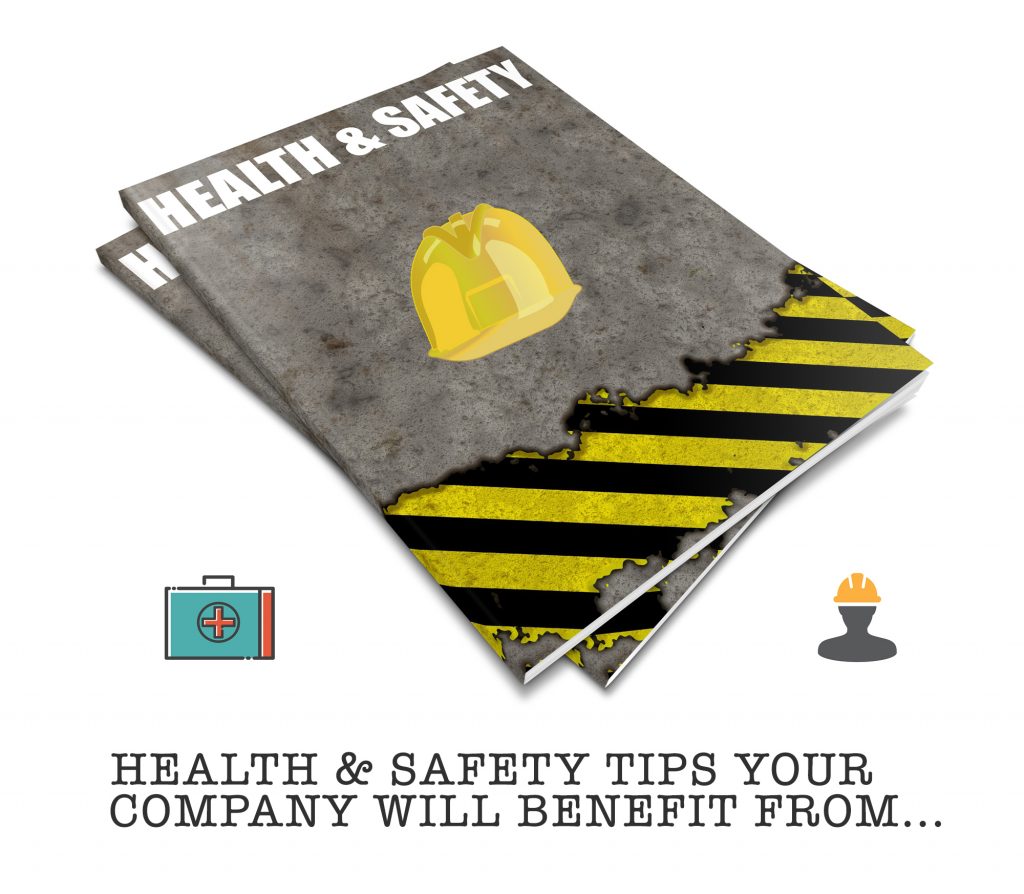As an employer, there are many workplace issues that fall on your shoulders, including the health and safety of your employees. It’s your legal duty to ensure that the environment and culture you provide protects the mental and physical health of your employees at all times. It’s a daunting task especially if you consider that 232,629 Canadian employees reported an injury and lost-time claim in 2015, according to the Association of Workers’ Compensation Boards of Canada.
But it’s not just injuries that you’re responsible for. Results from a 2014 Angus Reid survey on sexual harassment in Canada revealed that 3 in 10 Canadians said that they had been sexually harassed at work. And In any given year, one in five people in Canada experience a mental health problem or illness, with a cost to the economy of more than $50 billion, according to the Mental Health Commission of Canada (MHCC).
So, what can you do to ensure the health and safety of your employees and what are you actually responsible for?
Employer Responsibility
According to the Canadian Centre for Occupational Health and Safety (CCOHS), “It is the legal duty of an employer to protect the mental and physical health of employees, and this includes protection from harassment and violence. Many provincial occupational health and safety acts now include harm to psychological well-being in the definition of harassment.”
And there is a logical reason behind this. The human and financial cost of workplace harassment and violence are great. Employees who suffer from harassment or violence are not only physically and psychologically affected, but they’ll also impact your organization with decreased productivity, low morale, increased absenteeism, higher health care costs, and potential legal expenses.
As for mental health, “No workplace is immune from mental health challenges, and now no workplace is without the resources to address them,” says Louise Bradley, MHCC President, and CEO. “The Standard gives every employer the opportunity to examine their mental wellness efforts and the tools they need to improve.”
And for those organizations that decide to make mental health a priority, there’s a huge benefit. During an MHCC Case Study Research Project, which tracked 40 Canadian organizations in various industries and sectors as they successfully implemented the National Standard of Canada for Psychological Health and Safety in the Workplace, there was a remarkable improvement in mental health.
- 66% enhanced awareness of mental health among employees
- Participating organizations achieved on average 72% compliance with the five elements (commitment and policy, planning, implementation, evaluation and corrective action, management review) in the Standard, a remarkable improvement from 55% compliance at the baseline stage.
As for physical safety, according to CCOHS an employer must:
– Establish and maintain a health and safety committee, or encourage their workers to select at least one health and safety representative
– Take every reasonable precaution to ensure the workplace is safe
– Train employees about any potential hazards and how to safely use, handle, store, and dispose of hazardous substances and how to handle emergencies
– Supply personal protective equipment and ensure workers know how to handle all equipment safely and properly-
– Immediately report all critical injuries to the OH&S
– Appoint a competent supervisor who sets the standard for performance and ensures safe working conditions.
Health and Safety Tips
With your employer responsibilities in mind, below are a few health and safety tips for your company.
Conduct Inspections / Risk Assessment
You might be surprised to discover where hazards are hiding in your company. Hazards can exist under desks, on the plant floor, in the air, and anywhere your employees work. Regularly inspecting your workplace for hazards is essential for your worker health and safety.
Depending on the high hazard or high risk of your organization, you need to schedule a detailed inspection that looks for biological (viruses and mold), chemical (cleaners, adhesives, paints), ergonomic (repetitive and forceful movements, computer stations), Safety (machine guards), and physical hazards (noise, heat, and cold).
When conducting an inspection, follow these Look up, down, around, and inside. Be methodical and thorough.
– Draw attention to any immediate danger
– Shut down and lock out any hazardous items that cannot be brought to a safe operating standard immediately
– Describe each hazard and its exact location
– Ask questions but do interrupt work activities
– Consider the static and dynamic conditions of each item you inspect
– Discuss potential hazards and dangers as a group
– Photograph dangerous situations
Ask the operator to demonstrate equipment and check for their knowledge on dangers that may be present during operation.
Once the inspection is completed, provide your health and safety committee with the report and implement corrective action.
Develop Safe Workplace Facilities
Housekeeping is crucial for a safe and healthy workplace environment. Whether you’re in a traditional office or industrial workplace, including factory, warehouse, or manufacturing plant there are many challenges to keeping your employees protected. In general, you should implement the following tips:
Prevent slips, trips, and falls
OSHA’s Walking-Working Surfaces Standard 1910.22(a) explains that all workplaces should be “kept clean and orderly and in a sanitary condition.”
The Canadian Center for Occupational Health and Safety recommends:
– Reporting and cleaning spills and leaks
– Keeping aisles and exits clear
– Installing mirrors and warning signs in blind spots
– Replacing worn, ripped, or damaged flooring
– Installing anti-slip flooring in dangerous areas
– Using drip pans and guards
Eliminate fire hazards
According to OSHA’s Hazardous Materials Standard (1910.106), employees are responsible for keeping unnecessary combustible materials from accumulating, and waste should be disposed of daily. Consider taking TriTech’s Detection & Control of Flammable Substances course.
Fire safety precautions include:
– Keeping only a limited number of combustible materials in the work area
– Storing quick-burning, flammable materials in safe locations
– Avoiding clothes contamination
– Keeping passageways and fire doors free of obstructions
– Keep materials at least 18 inches away from sprinklers and fire extinguishers
– Report and fix electrical hazards
Control dust:
Dust accumulation of .8 millimeters that covers at least 5% of a room’s surface poses an explosion hazard. It can also affect equipment’s length of life and quality as well as air quality for your employees. Dust should be removed through vacuuming, sweeping, water wash-down, and other methods.
Prevent falling objects:
Place heavy objects on lower shelves, and keep equipment away from edges. Stack boxes and materials straight and use a toe board, toe rail, or net to prevent objects from falling. OSHA’s Materials Handling, Storage, Use, and Disposal Standard (1926.250) states that storage areas should not present hazards for tripping, fire, explosion, pests, or falls.
Provide and wear personal protective equipment and tools:
Basic PPE equipment such as closed-toe shoes, safety glasses, gloves, hats, glasses, and respirators should be used as required by the environment.
Create written rules:
As an employer, you must display a health and safety law poster where employees can easily access and read it. You should also have a healthy and safety policy that clearly states who does what within your business, when, and how.
Create a Plan for Mental Health, Harassment, and Violence in the Workplace
When workplace harassment and violence is not defined, it can go unnoticed and unreported. The key is to have a plan in place that helps you recognize and report harassment and violence.
Violence:
Workplace violence can take many forms. It can include physical violence such as hitting, shoving, kicking, and threatening behavior. It can also be in the form of arguments, property damage, theft, psychological trauma, written threats, rumors, pranks, insults, and condescending language.
Harassment:
Workplace harassment is a form of discrimination. It involved unwanted physical and verbal behavior. It typically involved unwelcome remarks based on race, ethnic origin, color, religion, sexual orientation, age, marital and family status, disability, etc. Sexual harassment is any conduct, comment, gesture or contact that is sexual in nature and is likely to cause offense or humiliation.
To protect your organization, you should set up a no-tolerance policy. Managers must not tolerate any violent behavior including aggression, harassment, or threats of violence. There should be a written policy that describes how employees can report experiences with harassment and violence. You should also come up with a prevention program that includes reporting and investigating, emergency response planning, victim assistance, incident follow-up, and training and education.
TriTech offers a vast array of safety courses at their training facility, or private training sessions can be held at your location. Contact us for further details on protecting the safety and health of your employees.
TriTech Safety & Training Inc, located in Grande Prairie is in the best position to keep you up-to-date with the essential and important industry practices for preventing avoidable accidents. For more information go to https://tritechsafety.ca/courses.





